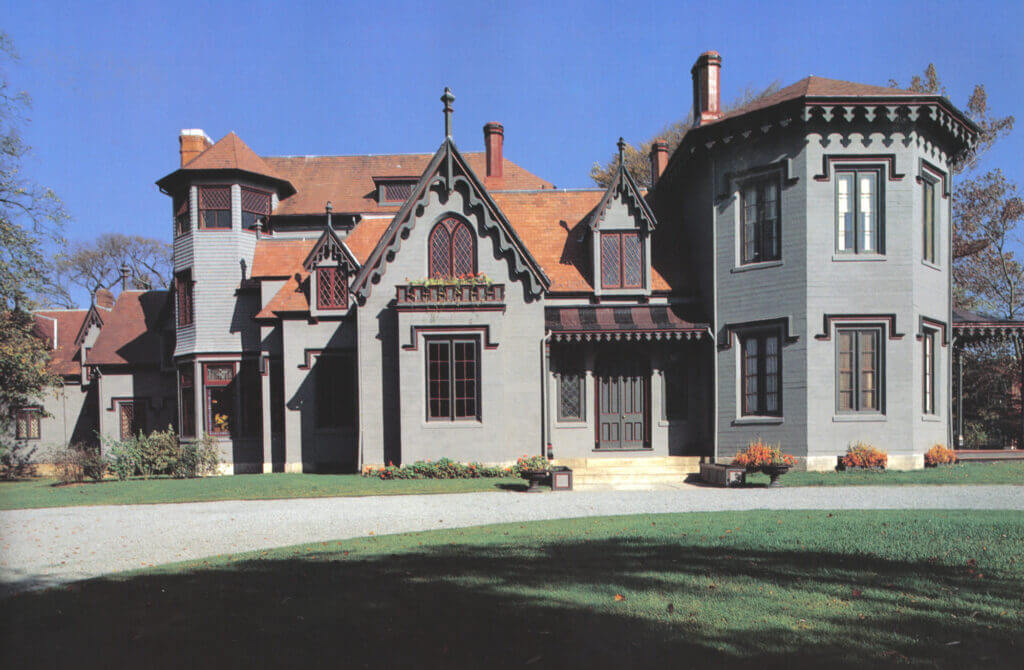Newport is fortunate to be a treasury of great architecture from a wide variety of periods. By a combination of happy accident and hard work, unlike many places where great works of architecture have been lost to successive periods of growth, Newport has maintained its architectural legacy. The history of Newport architecture falls roughly into 4 distinct periods: Colonial settlement, Federalist and Early Victorian era, the Gilded Age and the Modern Era.
Federalist and Early Victorian Era (1780-1880)
Following the Revolutionary War, Newport went from being a elegant and prosperous colonial center to be a slowly recovering economic outpost. While the period immediately following the Revolutionary War did experience some buildings constructed in the Federalist Style, but not nearly so many as in cities like Boston, Philadelphia, and Charleston. An architectural style that was very popular during the early period of America’s growth was the Greek Revival style, as Americans sought to find an architecture more rooted in ancient democratic traditions than the styles connected with the architecture of Europe, ruled by royal dynasties. Excavations and archaeological expeditions brought back images of the Acropolis and the low-sloped roofed structures with pediments supports by Doric and Corinthian columns. These images, in turn, quickly found their way into much of the architecture built in the early 19th century. However, these formal, symmetrical buildings were better suited to the Mediterranean climate than to the New England snow and winters of Newport, and so the preferred architectural style switched directions with the rise of the Gothic Revival and Cottage Orné styles. Richard Upjohn was the noted New York architect of the mid-19th century who designed the George Noble Jones house, which is now owned by the Preservation Society and open for visitation. Following the Gothic Revival, the Second Empire Style became widely used in Newport, thanks largely to Newport architect George Chaplain Mason. He designed many dozen of houses in this style throughout Newport, but most frequently in the Kay-Catherine neighborhood. These large, Victorian Era homes have largely been maintained and preserved as single family residences. The other style present in this time was the Queen Anne Revival style, which helped anticipate and lay the groundwork for the Shingle Style.
Previous historical period (Colonial settlement) was posted in the previous week.
Following historical periods (the Gilded Age and the Modern Era) will be posted in the upcoming weeks as a blog series.
Looking to remodel your home? Let’s connect.
Join the Architectural Forum to stay up-to-date with architectural news from Rhode Island and abroad.
